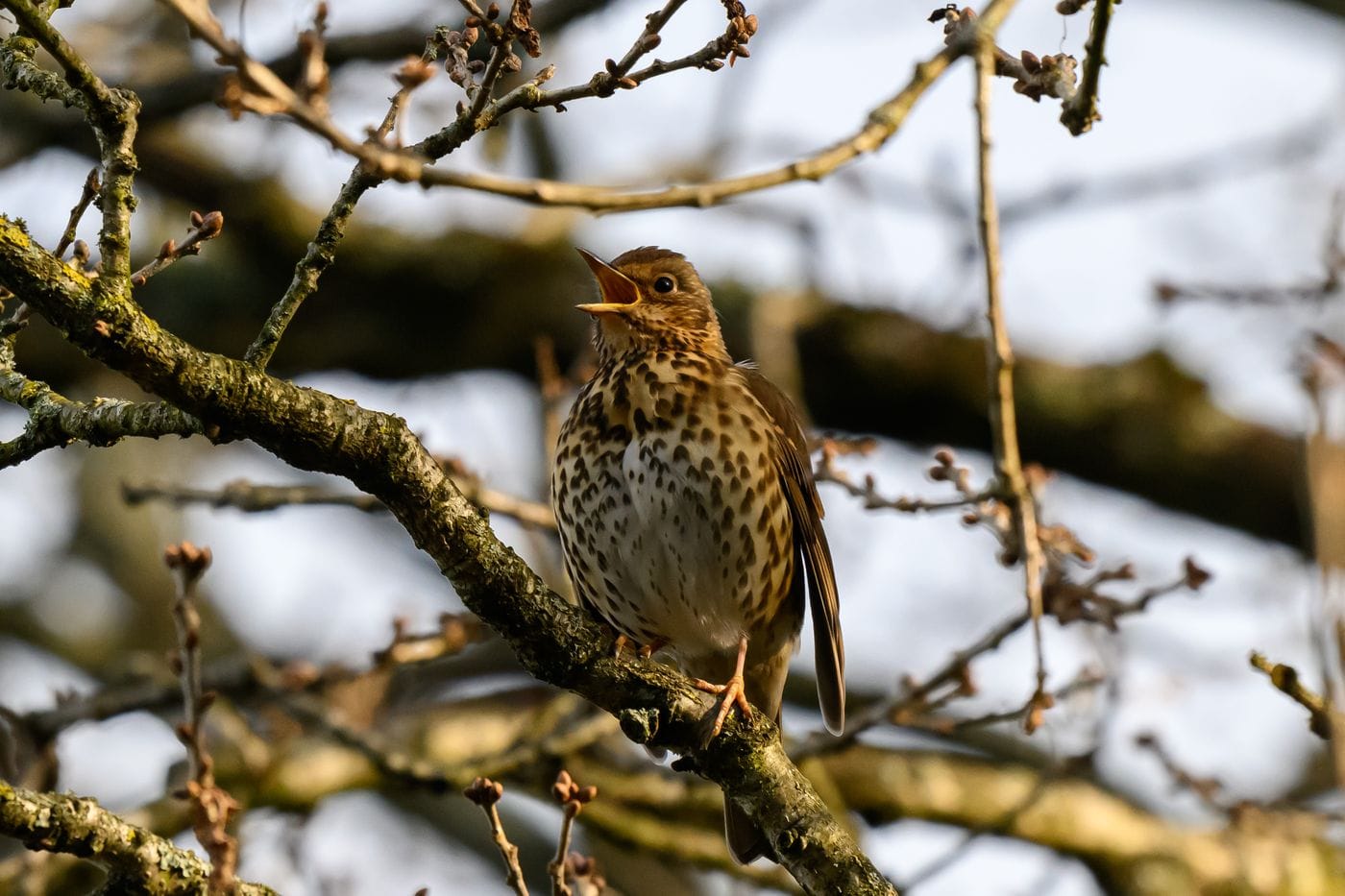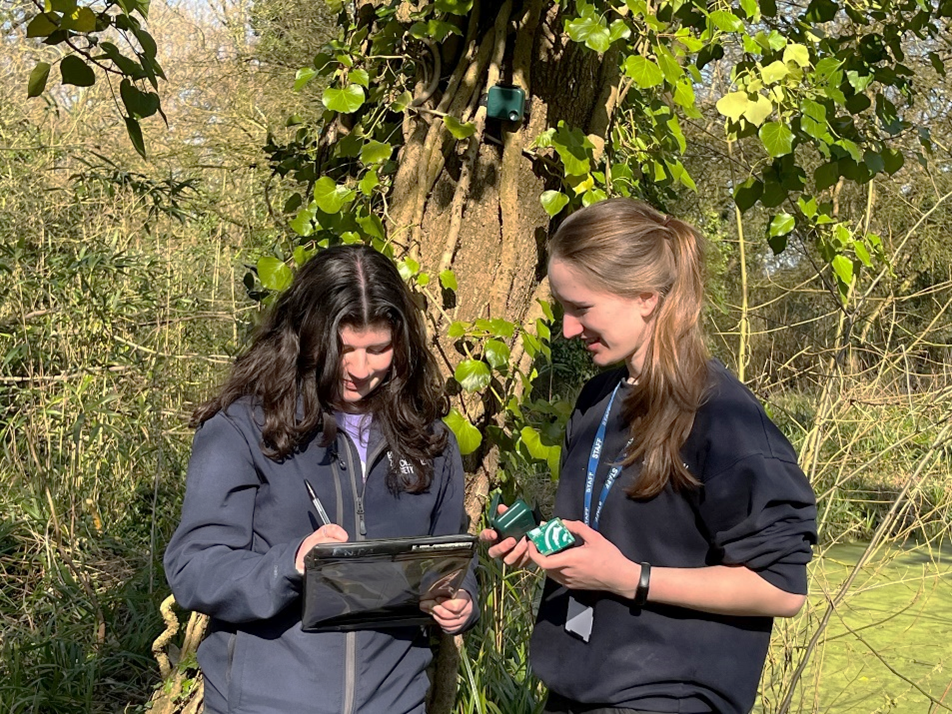
Using cutting-edge technology for species monitoring
Posted on: 13 March, 2025
Here at Bristol Zoological Society, we are using the very latest technology to monitor several species, including birds and bats, that enjoy the abundance of natural habitats and resources at Bristol Zoo Project.
Over the last few years the Native Species conservation team, along with students, have been using Passive Acoustic Monitoring (PAM) devices to monitor the diversity of bat species that visit or call Bristol Zoo Project home. More recently, they have been exploring how audio recordings can be used to monitor birds.
 PAM devices such as AudioMoths and Song Meters, are acoustic loggers that can be used to record audible frequencies, such as bird song, as well as frequencies beyond the range of human hearing, such as bat echolocation calls. These recordings can then be analysed through different auto-identification software to provide vital information for biodiversity monitoring.
PAM devices such as AudioMoths and Song Meters, are acoustic loggers that can be used to record audible frequencies, such as bird song, as well as frequencies beyond the range of human hearing, such as bat echolocation calls. These recordings can then be analysed through different auto-identification software to provide vital information for biodiversity monitoring.
Recording devices have been deployed for the purpose of monitoring bird species in Bear Wood, the 7.5-acre ancient British woodland, which is sponsored by Natracare, and home to our European brown bears, European wolves, Eurasian lynxes and wolverines.
 The team have been recording between key times of activity, dawn and dusk, alongside monthly bird visual transects, to provide a concise snapshot of what birds are present on site.
The team have been recording between key times of activity, dawn and dusk, alongside monthly bird visual transects, to provide a concise snapshot of what birds are present on site.
Georgina Jarman, UK Conservation Officer, said: “The sound monitoring greatly supports our visual bird surveys as it allows us to detect and record over long periods of time, providing us with the full spectrum of activity on site. We are also able to record activity at night, helping us to detect owls and other night-time species that we wouldn’t usually be able to track.”
 Using Kaleidoscope Lite to view recordings of wren song.
Using Kaleidoscope Lite to view recordings of wren song.
After collecting the recordings, the team put the audio files through software from Wilder Sensing, a biodiversity monitoring and reporting company that processes soundscapes using Artificial Intelligence, to identify what species can be heard and to provide easy to use analytic tools to generate datasets for continual monitoring.
 ^ Proportion of identifications attributed to each species in Bear Wood (left) and Blackhorse Wood (right) at Bristol Zoo Project. From the 12 of December 2024 to the 16 January 2025. Figure generated by Wilder Sensing.
^ Proportion of identifications attributed to each species in Bear Wood (left) and Blackhorse Wood (right) at Bristol Zoo Project. From the 12 of December 2024 to the 16 January 2025. Figure generated by Wilder Sensing.
Through this evidence-based reporting we identified over 42 species of birds in 2023, 19 of which are considered to be of conservation concern, including woodcock, a woodland wading bird, that is now listed as highly threatened under the Red List for birds of conservation concern. In 2024 we detected 46 species, 20 of which are of conservation concern.
 Song thrush in Bear Wood at Bristol Zoo Project. Credit: Ella Sinn
Song thrush in Bear Wood at Bristol Zoo Project. Credit: Ella Sinn
Over the recent winter months, students have been using AudioMoth devices and BirdNet to analyse data, comparing the diversity of species between two locations at Bristol Zoo Project, as the teams plan to expand the monitoring to site-wide long term data collection in the future.
 This developing technology is a key step forward in our native species monitoring and conservation efforts, as we look to enhance native biodiversity in harmony with Bristol Zoo Project and attract a diverse range of wildlife to the South West of England.
This developing technology is a key step forward in our native species monitoring and conservation efforts, as we look to enhance native biodiversity in harmony with Bristol Zoo Project and attract a diverse range of wildlife to the South West of England.
Join us at Bristol Zoo Project to enjoy the wonderful things we have to offer and support is in 'Saving Wildlife Together.'

Want to help us save wildlife?
Become a member today for a year of wild adventure, and help protect the animals and habitats you love by supporting our conservation charity.

